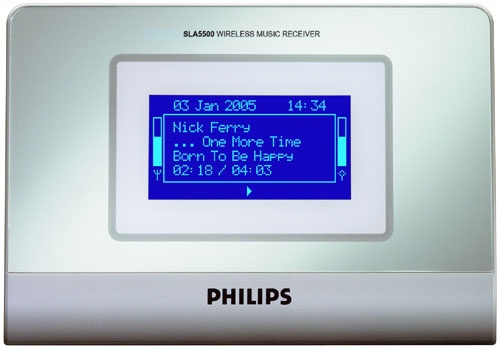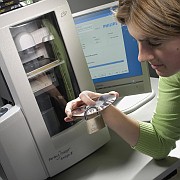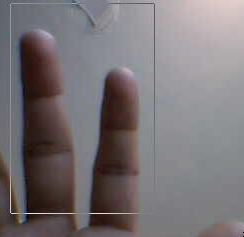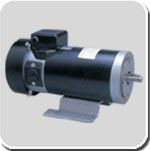Completed Projects (1996-2001)
|
|
SBM
was one of the first projects in the world to prototype an architecture
for the remote management of dynamically reconfigurable devices. We
came up with a detailed architecture, protocol design, set of remote
management services, and a novel reconfigurability
mechanism over a real-time operating system (VxWorks). The mechanism to
reconfigure the system was unique in the sense that it was built using
our special compilation tool
and a dynamic loader to modify and resolve interdependencies in order
to achieve modular dynamic software updates. We also implemented a new
application-layer protocol for managing devices. Our client prototype
consisted of an Algorithmics P4032 board with R5 MIPS (the RM53231 from
QED), and server-end Servlet support using JServ 1.1, JDK 1.2.14 and
JDSK 2.2. We demonstrated the SBM prototype including the novel reconfigurability mechanism that
led to our department-wide appreciation. SBM was the first significant
project in the industry to demonstrate that remote management and
reconfigurability in next-generation consumer devices was feasible.
The work led to two international conference papers, and the concepts
and tools from the SBM project have significantly influenced STREAMIUM
devices by Philips.
|
 |
Where? Philips Research, ASA Laboratories, Eindhoven, The Netherlands.
Group Manager: Dr. Henk Schepers (Systems and Applications Software Group)
Impact: SBM concepts and
tools are now part of the Internet-enabled Philips STREAMIUM™
Devices
Top
Philips Millennium
Watermarking
System for Digital Video
| Digital
video watermarking is used to prevent copy-protected video content from
re-entering the compliant world after having been copied or transmitted
by noncompliant devices or media. The Millennium Group (Philips-led,
with Digimarc and Macrovision) offered one such copy protection
solution with robust and secure watermark for video formats. In this
project, I was primarily involved in the implementation and in-house
standardization of watermarking algorithms. Based on a spatial
correlation technique, we implemented a video watermarking algorithm
called the "Millennium" and also evaluated the system for invalid false
positives, i.e., false positives that occur when in fact no watermark
is embedded or a wrong payload is retrieved. We also conducted several
experiments to test its resistance to color conversion, spatial shifts,
as well as its robustness to compression, quantization, sampling,
cropping, noise addition, speedups, logo insertion, frame erasures, and
transmission errors. I was involved in two successive intermediate
releases of the algorithm before leaving to earn my PhD from Cambridge.
This work has evolved into two innovative software products – REPLITRACK
and CINEFENCE
– available from Philips. |
 |
Where? Philips Research, ASA Laboratories, Eindhoven, The Netherlands.
Group Managers: Charles Knibbler and Dr. Maurice Maes (Software IP group)
Impact: Millennium evolved into two innovative
products - REPLITRACK
and CINEFENCE
- available from Philips
Top
Sasken's MPEG4
Codec and Delivery
Multimedia Integration Framework
| As
a
founding member of the Mobile Multimedia R&D group, I was involved
in the design, implementation, and evaluation of the standard MPEG-4
solutions. In particular, I co-led an initiative that implemented
an innovative network-aware middleware stack based on ISO/IEC 14496
(Part 6) of the MPEG-4 standard known as DMIF (Delivery Integration
Multimedia Framework). MPEG-4 DMIF is a communication middleware that
can be used as plug-ins for distributed real-time applications from
video conferencing to interactive virtual games. We designed a flexible
solution that offered many advantages in a communication middleware
stack: increased efficiency, dynamic transport channels with QoS
support, and dedicated functionality toward underlying network stacks.
Our design objectives were to preserve flexibility, modularity, QoS
support, and an interoperable transport stack. This work is now an
integral component of the Sasken's . It has been
licensed and incorporated into several commercial products, including
NEC N902i/Panasonic P902i 3G cell phones, SHARP MPEG-4 VN-EZ1
Viewcams, etc. Output include over 3 international and national
(refereed) conference publications. |
 |
Where? Sasken R&D, Mobile Multimedia R&D group, Bangalore, India
Group Managers: Dr. Balvinder Singh (Video/Image Processing) and Dr. P. G. Poonacha (Communicatons Systems)
Impact: DMIF is now part of Sasken's STRAWBERRA applications. It has been licensed and incorporated into several commercial
products, e.g., NEC/Panansonic 3G Cellphones, SHARP VN-EZ1 Viewcam, as well as licenced to Ericsson, Intel and Mitsubishi Communications.
Top
MPEG4 Streaming-based Visual Surveillance System
| Send
an email to Rajiv.Chakravorty@gmail.com
for more details. |
 |
Top
Control-plane
Signaling in Resource
Reservation Protocol
| This
was my
first attempt to conduct independent
research work out of India. As a DAAD Scholar in Germany, I worked on
Internet Quality of Service. As part of my work, I studied Resource
Reservation Protocol (RSVP) and analyzed the aspects of this protocol,
especially Control-Plane signaling and its impact on the overall
quality of service mechanism. I implemented control-plane RSVP QoS
signaling mechanisms of a RSVP router built using an in-house SPEETCL
simulator, and evaluated how increasing multimedia traffic streams
could impact the control-plane signaling mechanisms. Results showed
that
router traffic overload could indeed exacerbate QoS signaling times and
degrade the quality of experience. In contrast to prior works that
investigated data-plane performance, this was one of the first to study
the control-plane in RSVP. The topic generated interest that led to my
talks in research labs in Europe and India. The output was one
international conference paper and two national (refereed) conference
papers. |

|
Top
Enabling Voice over the Internet
| Second
semester project at IIT Delhi. Prof. Subrat Kar supervised this
project.
The goal of this project was to design and implement a VoIP
application. The software application was designed and implemented in
JAVA (along
with two other students) and consisted of a call set-up mechanism, a
friendly user interface, and a low-rate LD-CELP GSM 06.10 voice codec
(originally written by Jutta Degener of TU Berlin)
ported with appropriate buffering and packetization mechanisms for
efficient transmission of voice data packets over the Internet. This
application was successfully demonstrated in a campus-wide Intranet
LAN. A related paper on this project won the "K.S. Krishnan Award" for the Best
Systems-oriented paper nationwide for Prof. Subrat Kar in 2001. |
 |
Top
Design of a Fuzzy-logic based DC
motor control
| As
part of
my final year undergraduate project, I led a five-member team that
conceived, designed, and implemented a novel fuzzy-logic based
synchronous DC motor control. The prototype involved work at the
intersection of hardware and software. The hardware design consisted of
high-performance OP-AMPs (operational amplifiers) externally
intrumented for sensing motor shaft torque and speed, a separate motor
speed-control circuitry, and a 12-bit ADC/DAC card for processing the
signal in an Intel 486 PC. The fuzzy rule-based inferencing software
was developed in `C'. This project was demonstrated and won the Best Paper Prize in a national
conference. In that same conference the previous year, I won the
"Consolation Prize" for a paper titled Implementation of an Intelligent Fuzzy Rule-based System. |
 |
